Most Custom rifle builders when blueprinting a Rem 700 action, they true up the receiver face, threads, and lug seats. Then the factory bolt gets face and lugs trued. If you indicate the bolt in by the firing pin hole, then the body isn`t running true. If you indicate off the body, then the firing pin hole will be off. Thats because the factory bolt is egg-shaped, undersized, and soldered pieces together. Rem cuts the bolt bore raceway around .701-.704 and the bolt is around .693-.698 and most of the time the bolt bore raceway is not the same diameter front and rear. So unless the bolt bore raceway is opened up accordingly and the bolt is sleeved or a PTG oversized bolt is used to match the action, you are only getting a partial blueprinting job. I hear all the time that their action was fully blueprinted by so and so and its as good as a custom action. It will never be as true as a custom action unless the bolt gets done the correct way (sleeved or oversized PTG style). If you don`t believe me, the next time you have barrel in lathe threaded, put action with trigger on barrel, put bolt in, put indicator on bolt and set on zero, then cock it, you will see what I`m talking about. I`m sure I will hear peoples opinions but I think everyone should know the truth.
Join the Hide community
Get access to live stream, lessons, the post exchange, and chat with other snipers.
Register
Download Gravity Ballistics
Get help to accurately calculate and scope your sniper rifle using real shooting data.

Install the app
How to install the app on iOS
Follow along with the video below to see how to install our site as a web app on your home screen.
Note: This feature may not be available in some browsers.
You are using an out of date browser. It may not display this or other websites correctly.
You should upgrade or use an alternative browser.
You should upgrade or use an alternative browser.
Gunsmithing Truth about blueprinting a Rem 700
- Thread starter excaliber
- Start date
And you think all custom actions are true and square? I assure you there are some that are not!! I would also say that unless your shooting benchrest were matches are won and lost by as little as .001 then there is no real need for a sleeved bolt. Shooting steel plates i dought very many could tell a difference. Lee
what is more important, the position of the bolt when the sear is pushing the rear up or the position of the bolt when there is 60k against the bolt face?
Shooting steel plates i dought very many could tell a difference. Lee
Excaliber makes a good point, information wise, but I agree with skeetlee on the issue of tangible results. At the local 200 yd range, it wont make a difference on an 8" steel plate, or on a 10" paper dinner plate (I'm cheap like that).
That said, I did go with a PTG bolt option when I sent my 700 to be trued and changed over to 6.5 Creedmoor for the 1K range in TN. I figure at 1,000 yds, that bit of accuracy may become tangible.
And now that you have exposed this little gem, now maybe you can explain the difference it makes?
Norm Crawford is a retired Sgt Major in the Army. In 2003 I watched him ring X's all the day is long at a US Palma Team practice with his Palma rifle. -a stock M700 blueprinted to what certainly must be substandard.
Funny, it was done right next to Nesikas, Quadlocks, BATs, Pandas, etc. . .
Another friend of mine, Corbin Shell won the tn st long range champs w/a Mauser.
The world surely stopped spinning that day.
C.
Funny, it was done right next to Nesikas, Quadlocks, BATs, Pandas, etc. . .
Another friend of mine, Corbin Shell won the tn st long range champs w/a Mauser.
The world surely stopped spinning that day.
C.
Last edited:
""""time that their action was fully blueprinted by so and so and its as good as a custom action.""""
yes that may be what a neophyte says or thinks, but most custom smiths would tell there customers to pick a custom action if you can afford it.
Putting any more than $250 in a remington, IMHO, is not cost effective when comparing the cost of the affordable custom actions available.
yes that may be what a neophyte says or thinks, but most custom smiths would tell there customers to pick a custom action if you can afford it.
Putting any more than $250 in a remington, IMHO, is not cost effective when comparing the cost of the affordable custom actions available.
i still feel a field rifle needs to maintain it's fieldability (if that's a word). i'd rather have a rifle with .010" of bolt body/receiver bore clearance but both lugs make contact when ignition takes place than one with .001" of clearance but the lugs weren't dead nuts enough to make full contact during ignition. i'd also rather have a rifle that works in all conditons, clean or dirty.
my personality match rifle has .007"+ of clearance between the bolt body and receiver bore. i want to win. if i honestly felt that tightening up that clearance would help me win, i'd sure as hell do it. i don't feel it will help me at all.
that said, your scope is attached to the receiver. the barrel is attached to the receiver. if there is any movement in the receiver/barrel joint between shots, your scope is not pointing in the same place shot to shot. i feel that the receiver/barrel union is critical and and it is worth it to me to take every precaution that that joint is stable. that does not change the function of the rifle.
now if we aren't talking field rifles but dedicated bench rifles, everything needs to be taken to the nth degree. we aren't on a benchrest site though.
my personality match rifle has .007"+ of clearance between the bolt body and receiver bore. i want to win. if i honestly felt that tightening up that clearance would help me win, i'd sure as hell do it. i don't feel it will help me at all.
that said, your scope is attached to the receiver. the barrel is attached to the receiver. if there is any movement in the receiver/barrel joint between shots, your scope is not pointing in the same place shot to shot. i feel that the receiver/barrel union is critical and and it is worth it to me to take every precaution that that joint is stable. that does not change the function of the rifle.
now if we aren't talking field rifles but dedicated bench rifles, everything needs to be taken to the nth degree. we aren't on a benchrest site though.
And yet time and time again these half trued rem 700's produce amazing results, serve our military thousands of times over, are reliable, repeatable and accurate. Hmmmm? I've seen a handful of these "custom" tight tolerance actions fail at a sniper comp due to the shitty conditions with dust, dirt, rain, snow. The gun MUST go bang or its a completely worthless piece of metal. I can trusty trued but slightly sloppy remington under almost any conditions and yet I achieve half Moa or better results to 1000yds regularly. The rediculous tolerances we chase these days make me wonder how the hell any one built a rifle 100yrs ago and some how was able to engage and kill targets at a half mile? Interesting...
Last edited:
Sent a 700SA to LongRifles to get squared and blueprinted. My buddy and I put a Brux #4 bbl on it chambered in 260 Rem. Shot 1rd and cleaned for 5rds. Shot 3 shots and cleaned 2x. Then shot a 5 shot group that measured 0.571". And this is on ltwt hunting rifle. I don't want or need a custom action to hunt with.
Norm Crawford is a retired Sgt Major in the Army. In 2003 I watched him ring X's all the day is long at a US Palma Team practice with his Palma rifle. -a stock M700 blueprinted to what certainly must be substandard.
Funny, it was done right next to Nesikas, Quadlocks, BATs, Pandas, etc. . .
Another friend of mine, Corbin Shell won the tn st long range champs w/a Mauser.
The world surely stopped spinning that day.
C.
Great post. I get a chuckle when I read these threads. All of this figuring goes into it and it means nothing. Sure it is good to correct as much as possible when fitting a barrel but there are 3 things that make a rifle shoot. 1; THE SHOOTER, 2; barrel quality, 3; ammo. In that order. It is common knowledge that most bores aren't straight. IMHumbleO the action is just a small part of the equation.
I wish I could shoot as well as some of my rifles can. I have a bud that regularly embarrasses shooters with 2,3,4K$ rifles with his AKs, Nagants, and Mausers at the local 100 yd indoor range. Myself included and it makes me sick.
Great post. I get a chuckle when I read these threads. All of this figuring goes into it and it means nothing. Sure it is good to correct as much as possible when fitting a barrel but there are 3 things that make a rifle shoot. 1; THE SHOOTER, 2; barrel quality, 3; ammo. In that order. It is common knowledge that most bores aren't straight. IMHumbleO the action is just a small part of the equation.
I wish I could shoot as well as some of my rifles can. I have a bud that regularly embarrasses shooters with 2,3,4K$ rifles with his AKs, Nagants, and Mausers at the local 100 yd indoor range. Myself included and it makes me sick.
(I enjoyed your post and appreciate the compliment)
Figuring. . .
A dangerous word apparently. I'm blessed to have some rather sophisticated software for programming the machines in the LRI inventory. I've made complete solid models of both long/short action M700 actions. A .005" diameter differential between receiver/bolt works out to an angular deflection of .058" degrees. The 12 o clock lug tips away from the receiver .00015".
Having actually worked for what was (at the time) considered one of the most "marquee" action producers in the world (Nesika Bay Precision) I can tell you that after shooting HUNDREDS of Nesika guns and HUNDREDS of accurized M700's there is to date NO difference on paper. However I can say that I had to rework a whole lot of Nesika's with galled up lugs, receivers too tight to run after coating the bolt, etc.
Not so with the little pissant M700.
So theorize/ponder/bench race the subject all you want. Treat it for what it is; passionate fictional conversation.
If you deem that a custom action belongs in your safe, buy one. They are awesome and very, very well made with all sorts of cool little widgit features that production actions will never have. If you want a "blue collar" gun that runs the numbers then buy an M700 and smile as you hold it in your hand and the custom guy stares at a delivery date that's six months out.
Keep it real!
C.
And amazingly a savage, with all of its major components held in place with paper clips and bubble gum can shoot well. Someone should let them and tikka know that the 3/4" slop they roll is killing their accuracy.
I am reducing inventory from my safe, BUT my factory Winchester mod 70 will not be one of them.
Custom actions are way cool! So are Ducati's, Ferrari's etc.
Roll with what you like, have fun and shoot the shit out of the weapon you choose. Each has their place IMHO......
Custom actions are way cool! So are Ducati's, Ferrari's etc.
Roll with what you like, have fun and shoot the shit out of the weapon you choose. Each has their place IMHO......
So theorize/ponder/bench race the subject all you want. Treat it for what it is; passionate fictional conversation.
In your opinion, what makes an accurate rifle? Where should the money and attention be focused?
In your opinion, what makes an accurate rifle? Where should the money and attention be focused?
Barrel.
Next, ammunition, gasoline, and LOTS of quality trigger time.
90% of a rifle's accuracy potential is in the barrel. Properly fitted it makes a gun great. All the little stuff makes a great gun exceptional.
It's never going to fix a poor application of marksmanship fundamentals however.
I would like to add one thing i have seen and have actually tested. The one major part of any action, custom or otherwise is the firing assembly. Not all are created equal. To light of a spring or to heavy of a spring, to much fall, not enough fall " firing pin fall that is" drag on the firing pin, all these little details matter, or can matter. I shoot benchrest as i find it very difficult. Last week was the biggest short range benchrest shoot in the world and first and second place was determained by .0001, yep thats right .0001 When the comp is this tight or tough every little detail matters, and a firing pin with a little drag, or to lite of a firing pin, or weak spring will give you inconsistancies from shot to shot, and you wont win!!!! I like and shoot BAT actions, but just about every major BR shooter who is serious about winning will have there firing pin assembly re worked for better ignition. It makes a difference.
I think the old standard remington firing pin assembly is about as good as it gets, by the way! barrels and bullets also a major factor of course. Lee
I think the old standard remington firing pin assembly is about as good as it gets, by the way! barrels and bullets also a major factor of course. Lee
Barrel.
Next, ammunition, gasoline, and LOTS of quality trigger time.
90% of a rifle's accuracy potential is in the barrel. Properly fitted it makes a gun great. All the little stuff makes a great gun exceptional.
It's never going to fix a poor application of marksmanship fundamentals however.
You kind of shuffled my 3 cards but the message is the same and open to interpretation. The shooter is the key element to accuracy. Obviously the rifle/barrel has to be up to the challenge. The rest is up to the shooter, his ability and the quality of ammo.
Skeetlee's post says a lot but I'd give the .001" to the guy that read the wind/conditions before I'd credit firing pin drag reduction.
My pal with the Nagant would make you rethink. Sure it's not benchrest .001" accuracy but covering a 100 yd group with a nickel is nothing to scoff at.
Last week was the biggest short range benchrest shoot in the world and first and second place was determained by .0001, yep thats right .0001"
How is the spacing between holes punched in paper measured to sub-one ten thousandth of an inch resolution?
I agreed. How in the world does someone measure to .0001" the difference of distance between two or more holes in a paper target?
How is the spacing between holes punched in paper measured to sub-one ten thousandth of an inch resolution?
That's the problem with a democracy. 3 wolves decide the sheep is dinner.
Back to the topic, How does one explain the stock military rifle that shoots a ragged hole or the factory Rem. 700 that shoots anything (ammo wise) well?
Example; Fun match at Tac-Pro shooting clay pigeons @ 400yds, a friend wasn't doing well and he decided to shoot some "trash" ammo he had. Various bullets and powders/charges on the last relay to get rid of them. 8 hits in 9 shots. Kind of validates my claim that the shooter is the key factor.
Example; Fun match at Tac-Pro shooting clay pigeons @ 400yds, a friend wasn't doing well and he decided to shoot some "trash" ammo he had. Various bullets and powders/charges on the last relay to get rid of them. 8 hits in 9 shots. Kind of validates my claim that the shooter is the key factor.
Barrel.
Next, ammunition, gasoline, and LOTS of quality trigger time.
90% of a rifle's accuracy potential is in the barrel. Properly fitted it makes a gun great. All the little stuff makes a great gun exceptional.
It's never going to fix a poor application of marksmanship fundamentals however.
I couldn't agree more. People get way to worked up over trued actions and other trivial stuff when most would never see the difference it makes. If you only have one or two rifles then by all means go all out but I can't tell the difference between a custom action, a trued Remington, and a untrued Remington. Granted most of my stuff isn't small benchrest calibers and I don't keep track of groups that close but when a sporter barreled rifle shoots under 3/8" 3 shot groups with a untrued action your going to have a hard time convincing me it will shoot 1/4", or even 5/16", with a trued action. I've been building my own for over 20 years and the most accurate rifle I've ever owned was a .308 on a untrued Remington action with a Hart barrel. It would shoot in the .0's and .1's for 5 shots as long as I could hold it there. The problem in those days, roughly 17-18 years ago, Hart barrels were inconsistent. Out of 10 you'd get 1 to 2 that were absolute crap, 5 or 6 that were good, and the remainder were like the barrels you get today from most of the top manufacturers. We are rather spoiled today by the quality and consistency of barrels. A sub 1/2" gun is easy anymore with just about any barrel contour.
(I enjoyed your post and appreciate the compliment)
Figuring. . .
A dangerous word apparently. I'm blessed to have some rather sophisticated software for programming the machines in the LRI inventory. I've made complete solid models of both long/short action M700 actions. A .005" diameter differential between receiver/bolt works out to an angular deflection of .058" degrees. The 12 o clock lug tips away from the receiver .00015".
Keep it real!
C.
I'm not sure "figuring" is dangerous. Risky at best. To be blunt, I'm not trying to demean you or your buis. but your comment makes me think of all of the "engineers" I've met. Sophisticated software makes the world go around. Turbo's comment in the learning machining thread says it all. You have to understand before you can ask a question.
Squaring the bolt face in the action with the bolt in the cocked position eliminates the .00015" "tip" and encourages neck sizing.
Taking the whole content of your post, I gather that you agree that "blueprinting" a 700 is a waste of time and money.
Just joking but my point is that the shooter, barrel/rifle, ammo is a package that defies software.
I'm not sure "figuring" is dangerous. Risky at best. To be blunt, I'm not trying to demean you or your buis. but your comment makes me think of all of the "engineers" I've met. Sophisticated software makes the world go around. Turbo's comment in the learning machining thread says it all. You have to understand before you can ask a question.
Squaring the bolt face in the action with the bolt in the cocked position eliminates the .00015" "tip" and encourages neck sizing.
Taking the whole content of your post, I gather that you agree that "blueprinting" a 700 is a waste of time and money.
Just joking but my point is that the shooter, barrel/rifle, ammo is a package that defies software.
out of curiosity, why would one want to make the lugs sqare to the abutments when the sear is pushing up the rear? wouldn't allowing them to be square when there is no sear pressure and max bolt thrust make the most sense?
maybe not necessarily an increase of accuracy on target, but i find fitting a barrel to a receiver that i recut the threads on far more confidence building than fitting one to the oem threads.
Back to the topic, How does one explain the stock military rifle that shoots a ragged hole or the factory Rem. 700 that shoots anything (ammo wise) well?
Example; Fun match at Tac-Pro shooting clay pigeons @ 400yds, a friend wasn't doing well and he decided to shoot some "trash" ammo he had. Various bullets and powders/charges on the last relay to get rid of them. 8 hits in 9 shots. Kind of validates my claim that the shooter is the key factor.
Simply put, the quality of the barrel. I'm not going to give opinions, or at least try not to. I have built them using the sleeving method, truing the bolt without sleeving, and finally, replacing the factory bolt with a PTG bolt. Results? They all shot the very same. All used the same caliber, same ammo, same weather, same barrel, and the same shooter for testing. Caliber was nothing fancy, just the old reliable .308 win.
Of all those built by me, only two have had a problem with accuracy. The only thing different on those rifles was the specs on the barrel which was checked after the facts. Based on the track record of this barrel manufacturer, I didn't bother the check the barrels before building. That's my fault. One of those rifles got a new barrel from the same manufacturer, and now shoots great consistently.
Could I have made a mistake while building them? Maybe, but after building 100 or so rifles, what is the chance in that.
All that said, I still like to true the action like the original poster described above. Why? I like leaving nothing to chance. This will continue to be a controversial issue between people who don't want to spend the money, and plain just like to prove others wrong because they strongly believe they are right, and those who make a living doing this work whom convince their customer that only trued actions shoot good.
Sorry if any of this offends anyone here or elsewhere, but again, it's what I have observed in the few years I've been involved with precision bolt rifles. Moral is, that I agree with both sides as long as the barrel is everything it should be, and the work done on it is also as it should be.
How is the spacing between holes punched in paper measured to sub-one ten thousandth of an inch resolution?
I was wondering the same thing.
out of curiosity, why would one want to make the lugs sqare to the abutments when the sear is pushing up the rear? wouldn't allowing them to be square when there is no sear pressure and max bolt thrust make the most sense?
maybe not necessarily an increase of accuracy on target, but i find fitting a barrel to a receiver that i recut the threads on far more confidence building than fitting one to the oem threads.
Just offering a perspective. When squaring it at "rest" it creates the "tip" and subsequent gap on the top lug that Chad mentioned. It also cants the face off of 90 deg. from the bore when in the cocked position. I Like to lap the lugs and "square" the bolt face in the cocked position. This allows a neck sized case to hold the bolt in a both lug full contact mode during firing.
Yes I suspect new ammo or full length sized cases induce a rattle but I haven't verified. I like to think the ejector pressure holds it in place while the pressure builds.
Squaring it at "rest" guarantees a rattle because of the "tip" and lug gap. The case pressure will close the gap and force the rear of the bolt to drop.
You and everyone that does this knows that recutting the threads and facing the receiver are a given. Hell, they face the receiver with a chop saw. I've seen many that have half of the face actually blued because of the gap created by the barrel resting on the high spot.
I've seen many that have half of the face actually blued because of the gap created by the barrel resting on the high spot.
You know what is funny about that? Those same guns will often times shoot sub 1/2" with varmint barrels and rougher than a cob varmint barrels at that. So what is the moral here? Most likely that gap didn't mean squat. That barrel is accurate. Like I said before.....if your competing or just like it for the piece of mind go through with truing your action. I personally like to face the front of the action and lap the lugs just for piece of mind but I haven't seen where that is even needed in most cases.
I couldn't agree more. People get way to worked up over trued actions and other trivial stuff when most would never see the difference it makes. If you only have one or two rifles then by all means go all out but I can't tell the difference between a custom action, a trued Remington, and a untrued Remington. Granted most of my stuff isn't small benchrest calibers and I don't keep track of groups that close but when a sporter barreled rifle shoots under 3/8" 3 shot groups with a untrued action your going to have a hard time convincing me it will shoot 1/4", or even 5/16", with a trued action. I've been building my own for over 20 years and the most accurate rifle I've ever owned was a .308 on a untrued Remington action with a Hart barrel. It would shoot in the .0's and .1's for 5 shots as long as I could hold it there. The problem in those days, roughly 17-18 years ago, Hart barrels were inconsistent. Out of 10 you'd get 1 to 2 that were absolute crap, 5 or 6 that were good, and the remainder were like the barrels you get today from most of the top manufacturers. We are rather spoiled today by the quality and consistency of barrels. A sub 1/2" gun is easy anymore with just about any barrel contour.
Pure blasphemy Nathan.
RonA
I've had and still use 700's and had the threads, action, etc. "trued" WHEN NECESSARY. I've also used older 700 actions that did not need anything and after barreling would shoot with any custom rifle in the world.
Does "truing" eliminate user error, yes to some degree, but when tolerance is to the hundredths of thousandths and you can't read the wind, what's it matter...
Does "truing" eliminate user error, yes to some degree, but when tolerance is to the hundredths of thousandths and you can't read the wind, what's it matter...
I agreed. How in the world does someone measure to .0001" the difference of distance between two or more holes in a paper target?
Groups are measured to the thousandths. I'm on the world record committe for the International Benchrest Shooters Association and it's not hard for the committee to be withing .005" of each other. The course of fire is two classes with weight being the only difference between the classes. Each class fires 5-5 shot groups at 100yds and the same thing at 200 yds. Each yardage is calculated by averaging the 5 groups, then for each class the 100 and 200 yd aggs are averaged for a class grand aggregate. Then there is the two gun which was decided this year by .0001" I've won a National Championship yardage aggregate by .0001" before. Sometime the wind blows them out and sometimes it blows them in.
I am reducing inventory from my safe, BUT my factory Winchester mod 70 will not be one of them.
Custom actions are way cool! So are Ducati's, Ferrari's etc.
Roll with what you like, have fun and shoot the shit out of the weapon you choose. Each has their place IMHO......
I had a Ducati once. Never has an inanimate object made me swear more.
So statistically, it's pretty meaningless to say A beat B by 0.0001 when the margin of error for those averages is probably on the order of +- 0.005?
I had a Ducati once. Never has an inanimate object made me swear more.
But the sound they make rolling off the throttle going into a corner and then rolling back into it while coming out more than makes up for their little quirks. "Like Harleys that went to college".
So statistically, it's pretty meaningless to say A beat B by 0.0001 when the margin of error for those averages is probably on the order of +- 0.005?
Think of it as flipping a coin to break a tie.
No matter what you may think, flip of a coin or not, when matches are won or lost by such little margin everything matters, and i mean everything!!! Most people look at you cross eyed when you talk about firing pin drag, or the hole importance of the firing pin system. Most shooters or rifle men just dont know. lets face it how often have you heard someone talk about that ? I guess since no one talks much about it, there is no issue? Wrong!! I will say for what most shooters are after, a little drag on your firing pin wont ever been noticed. if you shoot short range benchrest and you want to win, you better know your firing pin system is up to par. the comp is simply to tough not to address the issue, if in faact there is one. I have seen first hand where a little work in this area of your action, will make a difference. I can promise you that!! Bottom line is that, its up to you to know and then up to you if you feel it is important enough to address. Lee
The thing about these threads is the original poster makes a controversial statement, then never shows up again. I get tired of seeing threads like this that get heart rates going for no real reason and the original poster is no where to be found.
Mark
Mark
The thing about these threads is the original poster makes a controversial statement, then never shows up again. I get tired of seeing threads like this that get heart rates going for no real reason and the original poster is no where to be found.
Mark
Same kind of guy that sets forest fires. Maybe he's scared.
Truing said action is good. Nut loose behing the trigger is bad. Machining new barrel is good. Determining .001 on a match........hell a gnat farting in front of said bullet makes it go hither dither. And yes the OP is non existant, damn trouble maker
Pure blasphemy Nathan.
RonA
I know Ron.
What would be cool is if someone had a machine rest and you used the same barrel to test action truing. Start off un-trued and work up a good load and then shoot 10 or 20 5 shot groups. Cut the threads off, true the action and rechamber it. Shoot the same loads for the same number of groups and see what the numbers say. For those in the business it could be a double edge sword. If there wasn't a substantial difference then they could lose a bunch of truing work. If there was then they could gain even more. I'm sure the degree of "un-true" would dictate the amount of gain by truing but I'd be surprised if the gain was over .050" in average group size for most of the actions out there. In the competition world that is huge but to the average Joe it's pretty minimal. I've seen way too many rifles shoot tiny groups with little to nothing done to the action to tell me it makes a big difference.
Idaho CTD
What your asking has been done, not only once but several times. I also agree that a lot of rifles will shoot a tiny group, but what does it take to make that same rifle shoot several tiny groups, back to back to back to back? Thats the question. Wallet groups dont get me all that exceited anymore. A small .170" 5 shot, five group agg, now that makes me listen. Lee
What your asking has been done, not only once but several times. I also agree that a lot of rifles will shoot a tiny group, but what does it take to make that same rifle shoot several tiny groups, back to back to back to back? Thats the question. Wallet groups dont get me all that exceited anymore. A small .170" 5 shot, five group agg, now that makes me listen. Lee
You know what is funny about that? Those same guns will often times shoot sub 1/2" with varmint barrels and rougher than a cob varmint barrels at that. So what is the moral here? Most likely that gap didn't mean squat. That barrel is accurate. Like I said before.....if your competing or just like it for the piece of mind go through with truing your action. I personally like to face the front of the action and lap the lugs just for piece of mind but I haven't seen where that is even needed in most cases.
You are correct. I've tried to make the point that many stock battle rifles shoot scary good and they are made to function with dirt and leaves in them. One constant is that most have the barrel screwed on so tight it takes a healthy gorilla to unscrew them.
As far as blueprinting and truing goes, it's mainly an operation of principal. My local class III had me look at a suppressor that was getting baffle strike. When screwing it on the barrel with a range rod you could watch the exit hole and it was obvious that the threads in the suppressor were off. Talked to the "gunsmith" (idiot in my opinion) at the mfg. He said the shoulder on the factory AR barrel wasn't square. I didn't check that but his "cure" was to wallow out the threads in the can and square the shoulder on the barrel. Said it will line up when it gets tight. As far as I'm concerned, this approach is wrong on all fronts. He informed me that I needed to go back to school.
Proves there's more than 1 way to skin a cat!
The thing about these threads is the original poster makes a controversial statement, then never shows up again. I get tired of seeing threads like this that get heart rates going for no real reason and the original poster is no where to be found.
Mark
I`m here. Just sitting back watching what people say. What I said is the truth. This website is mostly dedicated to steel shooters. I don`t feel a rifle that shoots 1/2" at 100yds is that impressive. I like tiny bugholes. From virgin brass to the same brass fired 5 times or more. It`s easy to build an accurate rifle but I want my rifle to be able to group day in and day out around 2" or less at 600yds. I shoot steel targets also but I used to shoot 600yd benchrest. I`m a accuracy fanatic. When I build a rifle, I want the very best components available. No doubt Remington actions shoot good and I have custom rifles using Rem actions. But I just can`t see blueprinting a Rem action when by the time you get done it`s the same price as a custom (Bat, Defiance, Stiller,Borden, Stolle, etc) and the resale value of a Rem will never be the same as a custom.
Truing said action is good. Nut loose behing the trigger is bad. Machining new barrel is good. Determining .001 on a match........hell a gnat farting in front of said bullet makes it go hither dither. And yes the OP is non existant, damn trouble maker
I`m no trouble maker. Just seeing what people was going to say.
It`s easy to build an accurate rifle but I want my rifle to be able to group day in and day out around 2" or less at 600yds.
Pretty tall order. I'd argue the cost of a blueprinted 700 compared to a custom. Just buy a lot of barrels. Sooner or later you'll find the magic wand.
Excaliber,
I have the same OCD thoughts and tendencies when I'm building rifles. If it was not for my office manager telling me that I cannot "donate" hours of labor into a Rem 700 action just to make me feel better, I would do it to every action I touch. I believe the same things as you, however I have to be realistic and make educated decisions on what I need to do in order to get a rifle to shoot. Because there is so many rifles with minimal work put into them that still shoot, and I'm not a good enough shot in order to reach our rifles full potential, I have to favor the side of doing the "Meat and Potatoes" services that customers can appreciate and keep me happy while not losing money on truing an action up. Here is what we do when we true an action.
-Hold the action in a fashion that is as stress free as possible.
-Use proper fitting and well maintained action bushings and action truing rods.
-Sharp tools set up properly in a well maintained machine, set up correctly.
-Single point cut action face, lug abutments, single point cut receiver threads concentric/square.
-Single point cut back of bolt lugs, bolt nose, front of bolt lugs, bolt face after bolt is dialed in co-axially.
-chamfer all critical surfaces that need clearance.
-use one of our match recoil lugs and or a properly ground recoil lug.
Add that action, with a well fitted barrel with a straight/concentric chamber with proper headspace from a quality barrel manufacturer in a stress free properly bedded stock and I just don't see how I can prove that it will not shoot worse than a BR style precision ground bolt in a perfect raceway type action. Now on paper, I will agree with what you are saying. But I am not able to tell the difference in pure accuracy numbers. I can tell the difference in features and fit and finish.
I also try to push customers for a quality custom action for a bunch of reasons even though it may not be a great business move considering we can charge around $1000 in services just fixing up a Rem 700 action. I have been working on a project that may satisfy your need for perfection in a Rem 700 action. Its a floating bolt head Rem 700 action. On paper, there should always be square lug contact, square bolt face and assuming the action is trued as mentioned above, it would yield near maximum accuracy potential with one negative effect that I can think of. Due to a sloppy bolt clearance, the firing pin will not be traveling perfectly parallel with the centerline of the action. This is something I can live with considering the benefits.
By adding the floating bolt head, I gain these benefits.
-I can install the bolt head in a fashion that brings the bolt handle as far as possible in the bolt handle cutout for maximum extraction.
-I can time the bolt handle timing perfectly
-Maintain Rem 700 reliability from the loose raceway while maintaining square bolt lug/face
-Guided, minimal clearance firing pin
-Post 64 style extractor.
-Gas Check behind the lugs
-Superior metallurgy on the lugs.
Even though these things probably cost me money and are not great business moves, I'm always pursuing perfection in everything we do. Lots of it is behind the scenes until proven out completely.
Mark
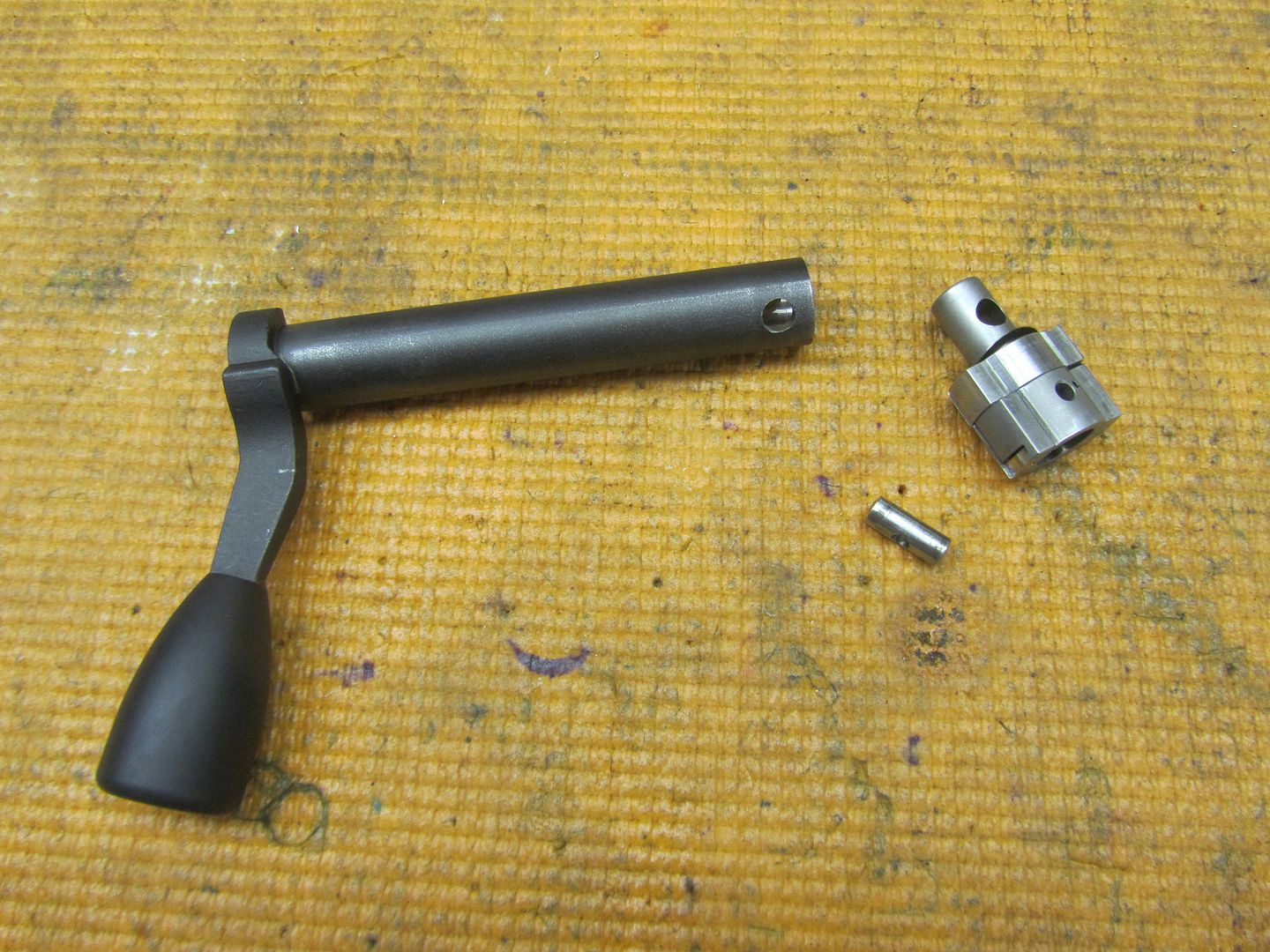
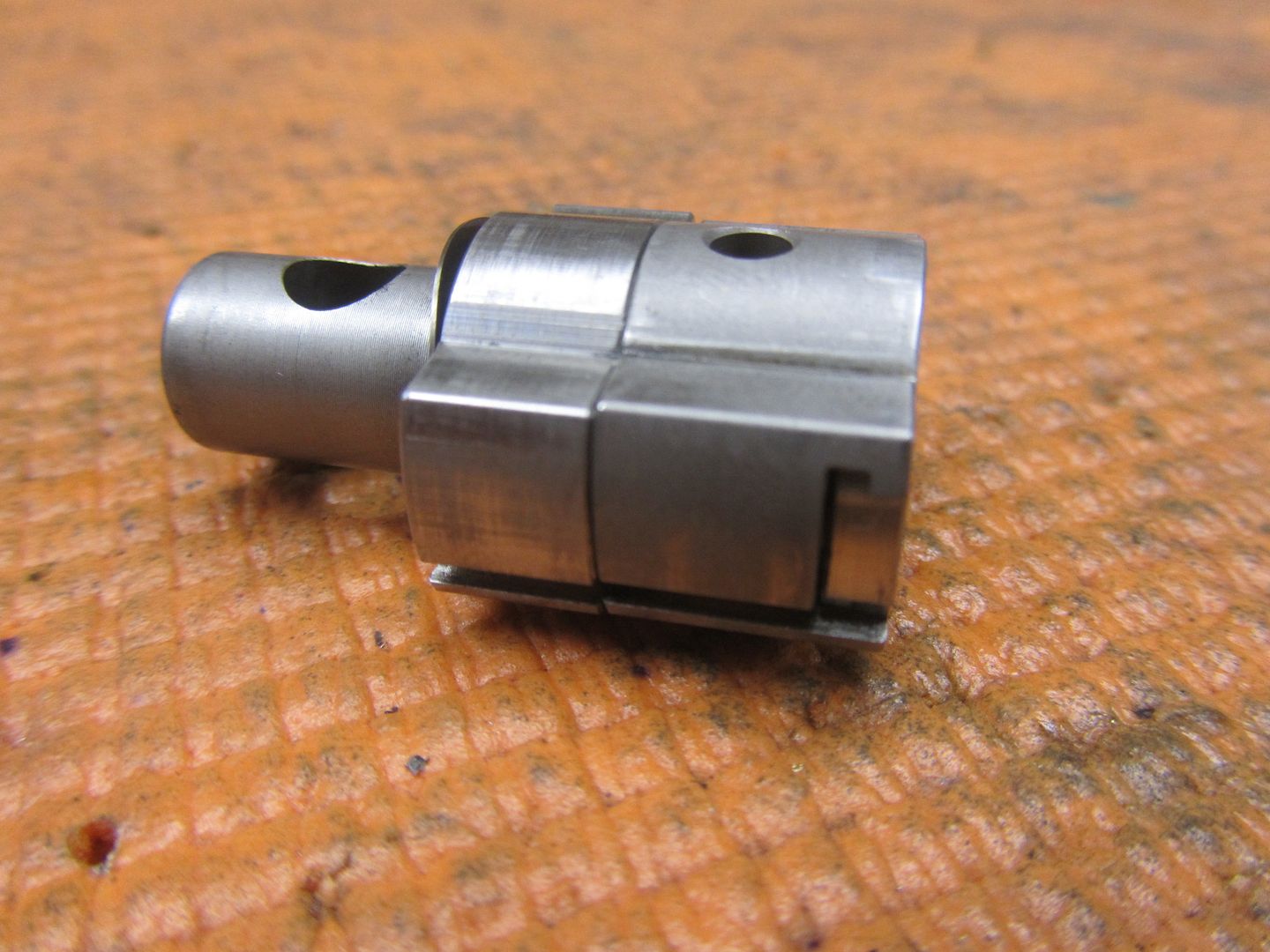

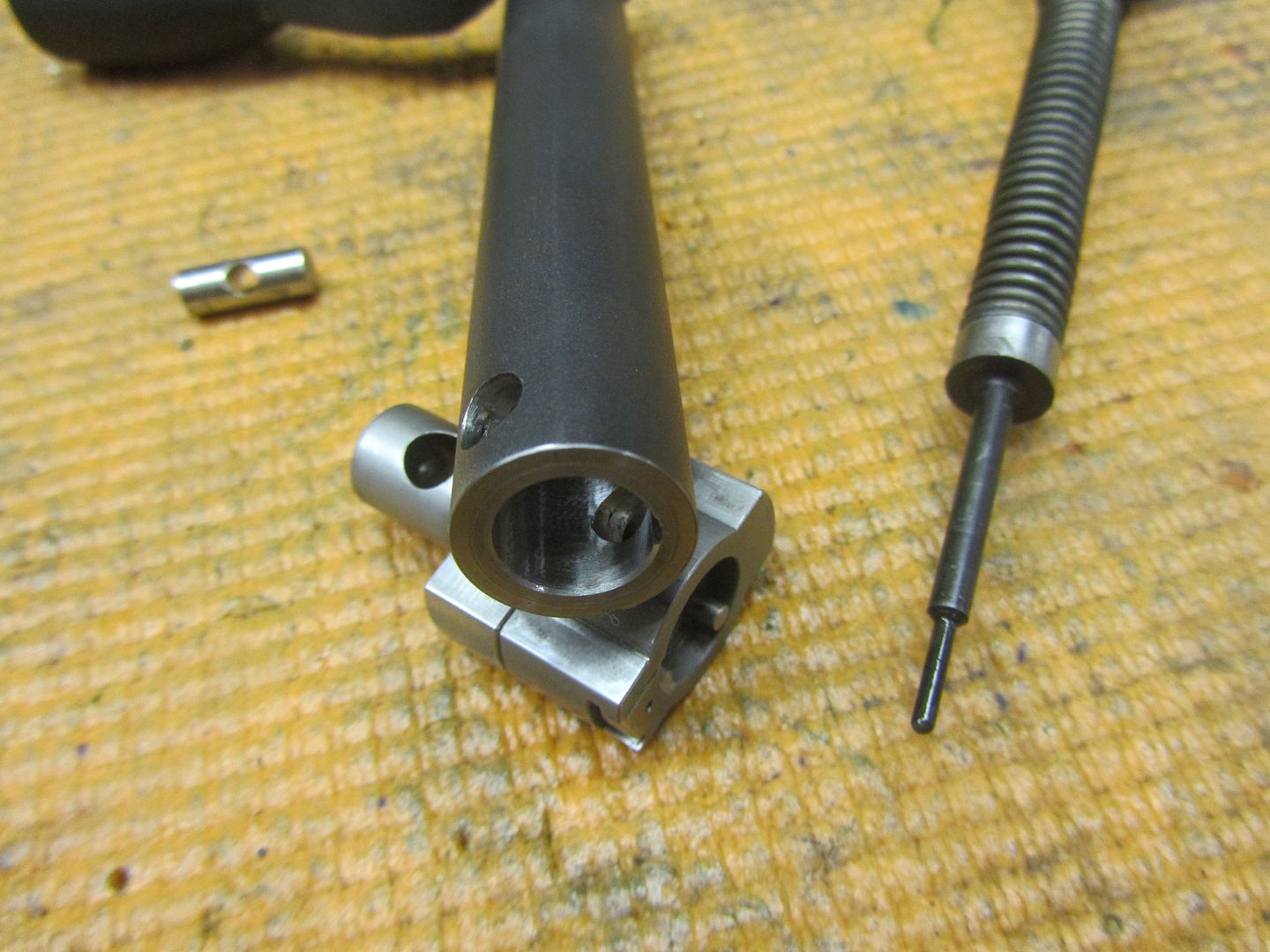
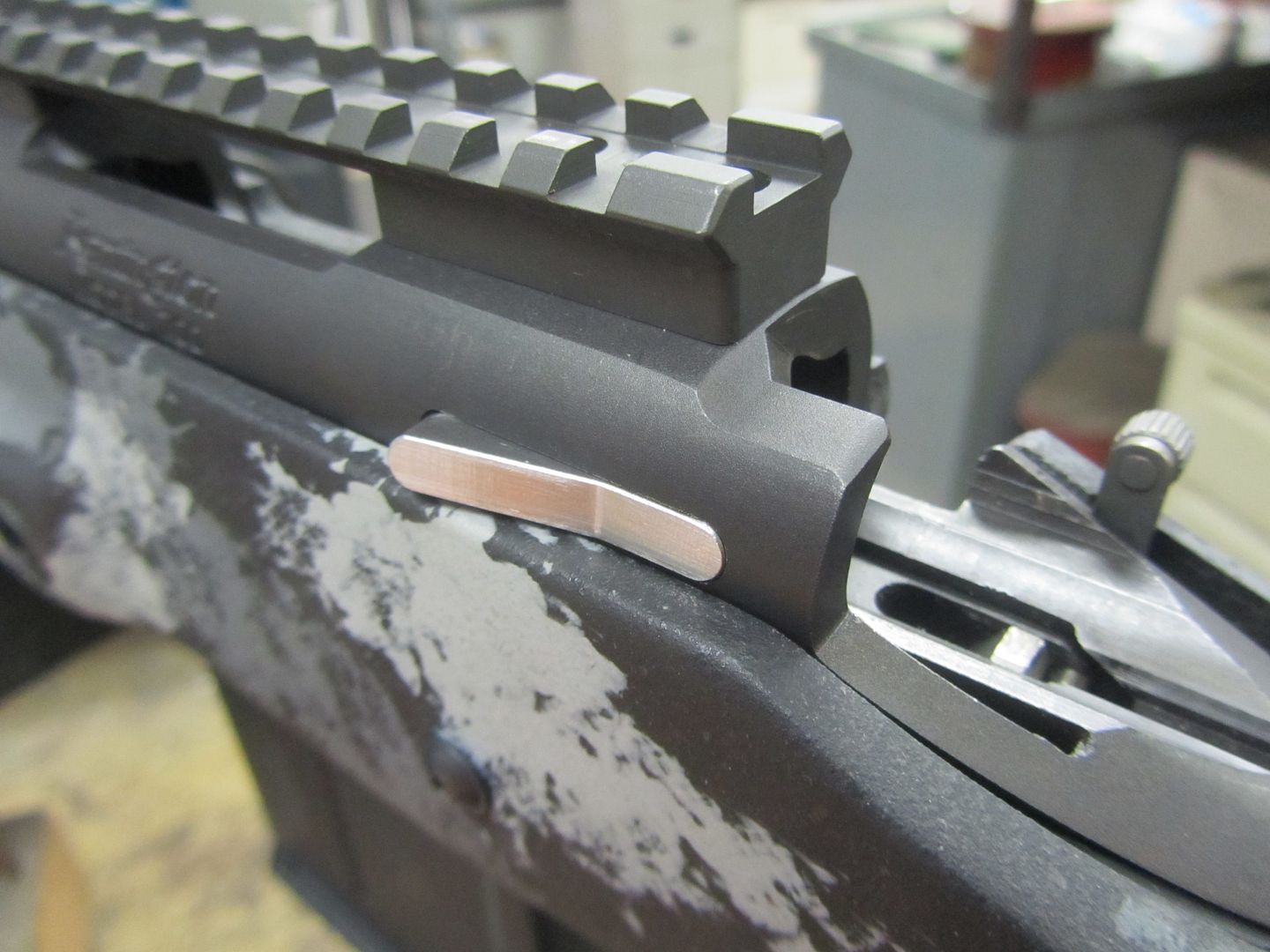
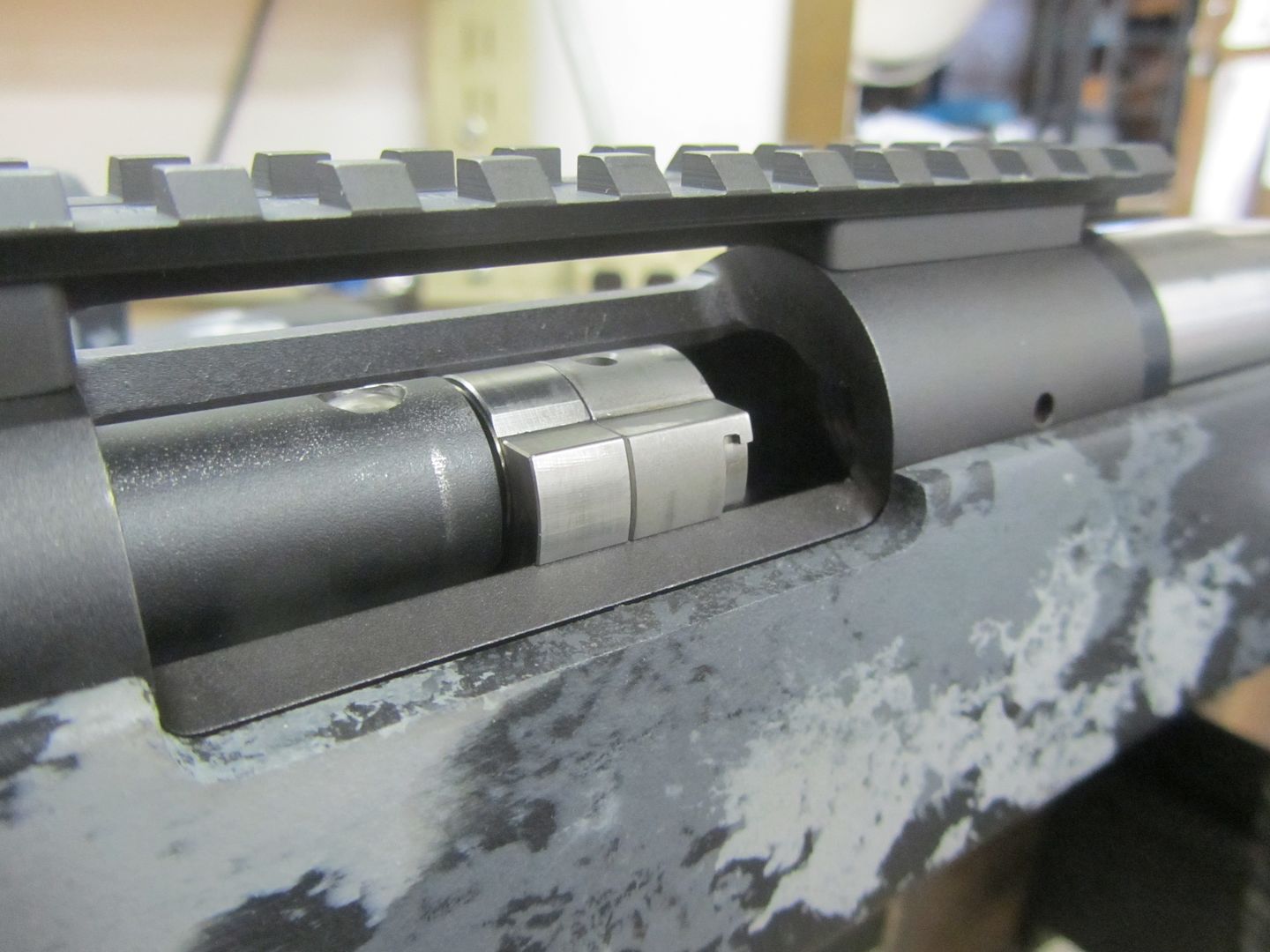
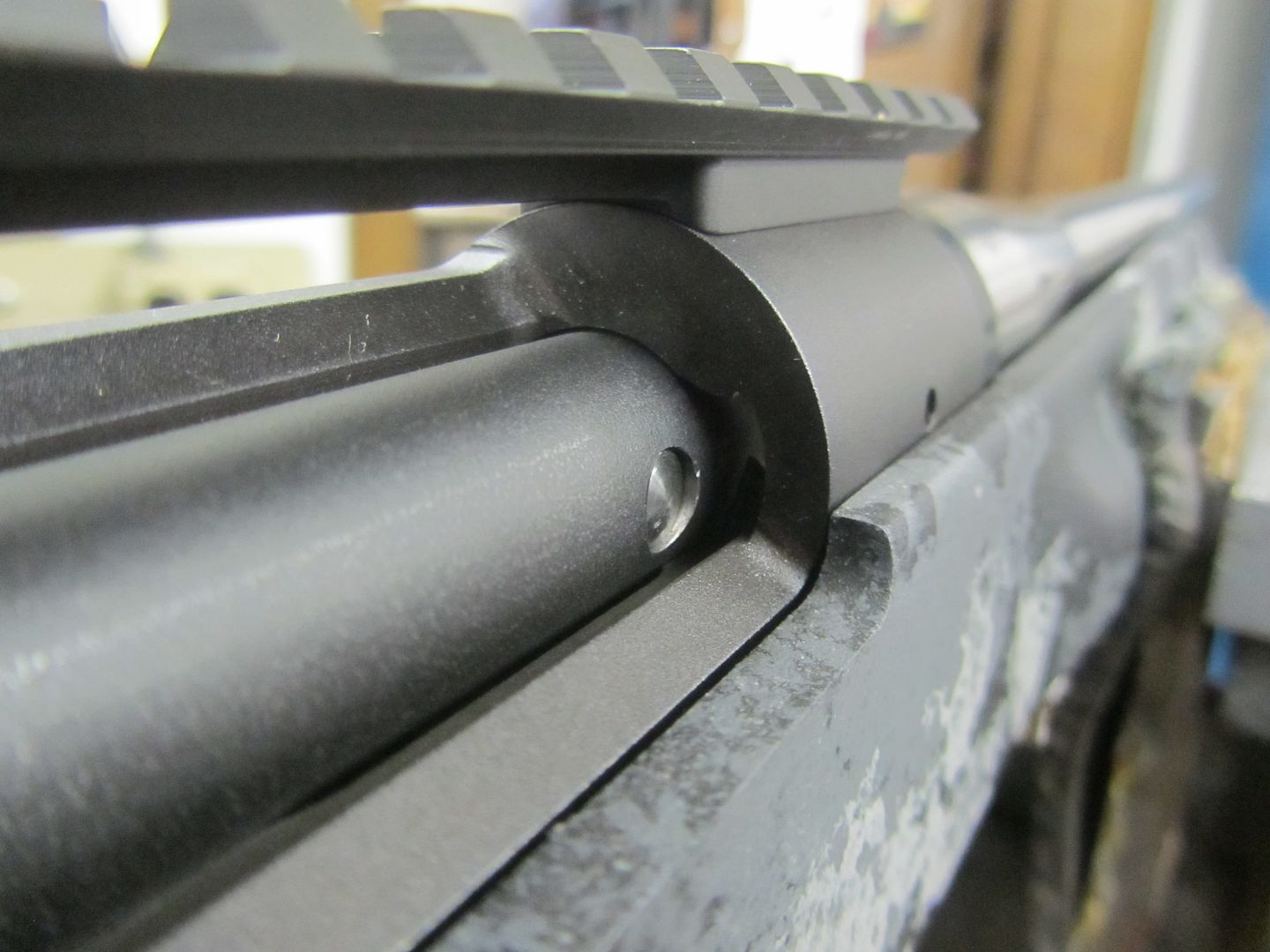
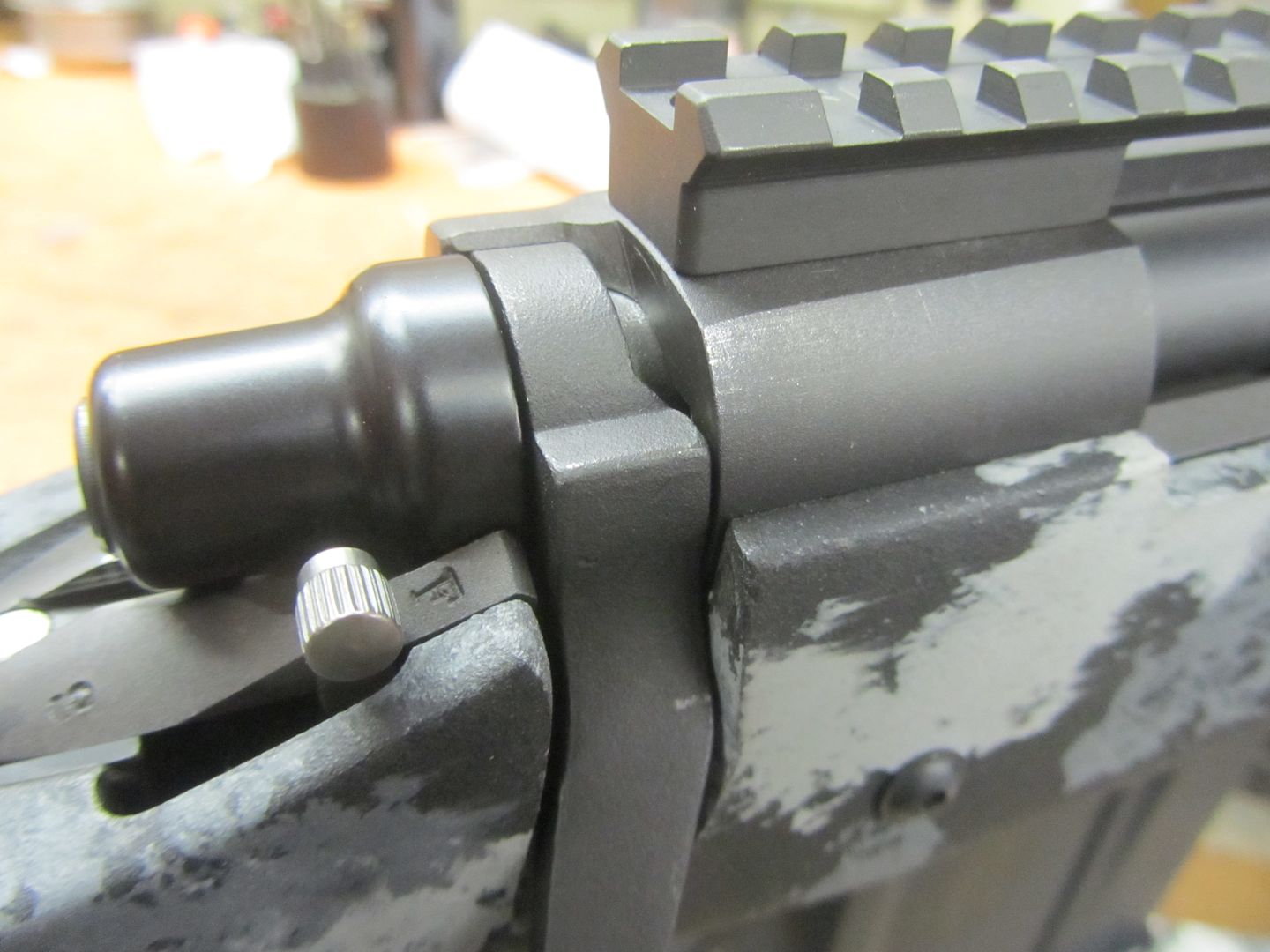
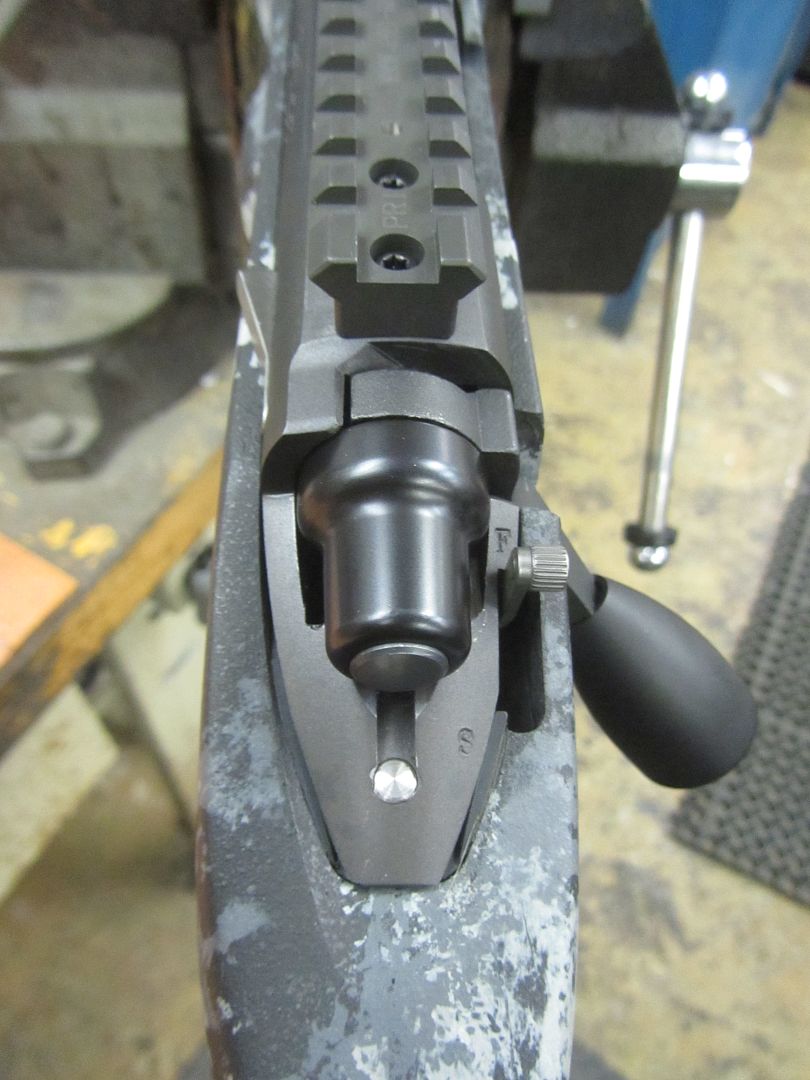
I have the same OCD thoughts and tendencies when I'm building rifles. If it was not for my office manager telling me that I cannot "donate" hours of labor into a Rem 700 action just to make me feel better, I would do it to every action I touch. I believe the same things as you, however I have to be realistic and make educated decisions on what I need to do in order to get a rifle to shoot. Because there is so many rifles with minimal work put into them that still shoot, and I'm not a good enough shot in order to reach our rifles full potential, I have to favor the side of doing the "Meat and Potatoes" services that customers can appreciate and keep me happy while not losing money on truing an action up. Here is what we do when we true an action.
-Hold the action in a fashion that is as stress free as possible.
-Use proper fitting and well maintained action bushings and action truing rods.
-Sharp tools set up properly in a well maintained machine, set up correctly.
-Single point cut action face, lug abutments, single point cut receiver threads concentric/square.
-Single point cut back of bolt lugs, bolt nose, front of bolt lugs, bolt face after bolt is dialed in co-axially.
-chamfer all critical surfaces that need clearance.
-use one of our match recoil lugs and or a properly ground recoil lug.
Add that action, with a well fitted barrel with a straight/concentric chamber with proper headspace from a quality barrel manufacturer in a stress free properly bedded stock and I just don't see how I can prove that it will not shoot worse than a BR style precision ground bolt in a perfect raceway type action. Now on paper, I will agree with what you are saying. But I am not able to tell the difference in pure accuracy numbers. I can tell the difference in features and fit and finish.
I also try to push customers for a quality custom action for a bunch of reasons even though it may not be a great business move considering we can charge around $1000 in services just fixing up a Rem 700 action. I have been working on a project that may satisfy your need for perfection in a Rem 700 action. Its a floating bolt head Rem 700 action. On paper, there should always be square lug contact, square bolt face and assuming the action is trued as mentioned above, it would yield near maximum accuracy potential with one negative effect that I can think of. Due to a sloppy bolt clearance, the firing pin will not be traveling perfectly parallel with the centerline of the action. This is something I can live with considering the benefits.
By adding the floating bolt head, I gain these benefits.
-I can install the bolt head in a fashion that brings the bolt handle as far as possible in the bolt handle cutout for maximum extraction.
-I can time the bolt handle timing perfectly
-Maintain Rem 700 reliability from the loose raceway while maintaining square bolt lug/face
-Guided, minimal clearance firing pin
-Post 64 style extractor.
-Gas Check behind the lugs
-Superior metallurgy on the lugs.
Even though these things probably cost me money and are not great business moves, I'm always pursuing perfection in everything we do. Lots of it is behind the scenes until proven out completely.
Mark









Just offering a perspective. When squaring it at "rest" it creates the "tip" and subsequent gap on the top lug that Chad mentioned. It also cants the face off of 90 deg. from the bore when in the cocked position. I Like to lap the lugs and "square" the bolt face in the cocked position. This allows a neck sized case to hold the bolt in a both lug full contact mode during firing.
Yes I suspect new ammo or full length sized cases induce a rattle but I haven't verified. I like to think the ejector pressure holds it in place while the pressure builds.
Squaring it at "rest" guarantees a rattle because of the "tip" and lug gap. The case pressure will close the gap and force the rear of the bolt to drop.
Question: If I read this correctly, you would be truing the receiver face, correcting thread alignment and dusting off the lug seats based off of the center line of the receiver raceway. Then you would alter the critical bolt surfaces (lug locking surface and breech face) to a different axis?
Similar threads
- Replies
- 7
- Views
- 2K
- Replies
- 15
- Views
- 2K
